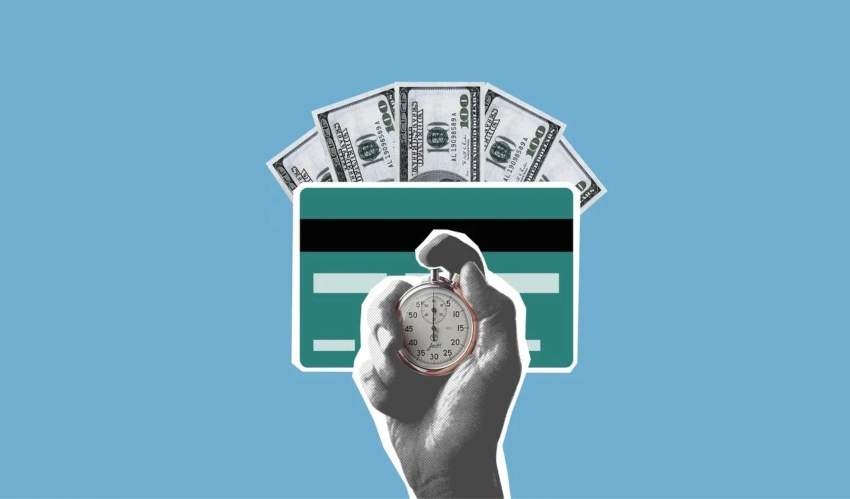A margin call occurs when the value of a trader’s account drops below the broker’s required threshold. Failing to meet a margin call can be costly and lead to positions being automatically closed. This guide explains how a margin call works, steps to satisfy an alert, plus tips for avoiding margin calls.
What Is A Margin Call?
A margin call is issued when the value of securities in a trading account falls below a certain level. By definition, it is a demand or notice from a brokerage to bring your account balance back to the minimum maintenance requirement. The alert can be satisfied by depositing additional funds or securities.
Importantly, the value of stocks or assets used as collateral for the margin loan will fluctuate with market conditions. However, the amount you borrowed stays the same. As a result, if the value of your assets falls, your equity in the position comparative to the size of your margin debt will shrink.
The types of margin calls and requirements are typically based on the type of asset you are trading and your account profile. The automated alert issued by your broker should provide an instant summary of requirements that need to be met as quickly as possible.

Example
Let’s take a look at an example of a margin call in action…
A trader invests $5,000 into a live trading account and borrows a further $5,000 from their broker.
This means a total of $10,000 can be invested in various financial assets.
The requirements of the loan include a maintenance margin of 40%.
Now let’s say the investor decides to purchase 100 shares in company A trading at $100 per share.
Below is a simple equation to show when a margin call could be activated:
- Price formula: Margin loan / (1 – maintenance margin)
- Example: $5,000 / (1 – 40%) = $8,333.33
This essentially means that if the market value of the account falls below $8,333.33, the trader could face a margin call.
This translates to a share price of $83.33 in company A.
After trading for a few weeks, company A faces media backlash for failings in its supply chain, the result of which is that the share price falls to $70.
The value of the investor’s account is now only worth $7,000 (100 * $70) and the trader would need to make up the $1,333 ($8,333 – $7,000) to avoid a margin call.
Fortunately, the top online brokers integrate a free margin call calculator, meaning you can understand your obligations before opening a position.
How Brokers Issue Margin Calls
Traders are usually notified after the markets close.
You should be able to view a summary of your obligations in your account profile, alongside your recent trading history.
Alternatively, brokers like eToro, E*Trade and TD Ameritrade provide real-time SMS alerts and notifications.
Margin calls are also more likely to be issued during periods of high volatility.
And while the call percentage can vary, most brokers require a minimum maintenance margin of around 30-40% to keep leveraged positions open. This should mean you have enough money to fund the present value of the position and cover running losses.
We recommend reviewing a broker’s margin account terms and conditions before signing up. Check the allocated settlement time of a margin call, what will happen if you can’t settle today, plus their liquidation rights.
Margin Accounts
Margin calls only apply to investors that hold a ‘margin account’. This is essentially where brokers lend traders cash to purchase stocks or other financial assets in return for a small capital outlay.
Importantly, buying securities with borrowed capital means clients can open larger positions and increase potential returns. With that said, margin trading is a high-risk strategy because you are responsible for paying associated interest rates and any additional costs to borrow the money. Losses are also amplified due to larger position sizes.
It’s worth pointing out that not all assets are available under a margin account. The US Securities and Exchange Commission (SEC), for example, does not allow options contracts to be purchased by retail traders on a margin account.
Brokers and regulators may also enforce maximum borrowing amounts. Webull, for example, allows retail investors to borrow and trade up to three times their account equity.
According to FINRA’s Federal Reserve Board Regulation T, a company is only able to lend traders up to 50% of the total purchase price of a stock.
Margin Accounts vs Cash Accounts
A cash account only enables you to spend the money you have deposited. This means that returns are limited, but potential losses are also limited. On the other hand, a margin account provides you with greater purchasing power in exchange for taking on debt.
Margin traders are not typically required to follow a set repayment schedule, unlike traditional loans. Instead, it is the trader’s responsibility to maintain an account balance and value that meets the broker’s minimum requirement.
Benefits of Margin Accounts
- Tax Deductions – Interest on margin loans may be tax deductible against your net investment income. It is recommended to consult a tax advisor in your local jurisdiction for guidance.
- Reactive – Having access to more funds than your initial capital would typically allow could help you take advantage of market opportunities.
- Flexible Borrowing Schedule – Margin loans often feature a more flexible repayment schedule compared to standard cash borrowing. This can give you more time to trade positions to offset repayments with profits.
- Larger Investments – Utilizing borrowed capital means you can open bigger positions in more markets simultaneously, potentially increasing profits.
- This can also help with portfolio diversification

Note, that while margin trading is attractive for many investors, it can also lead to large losses. Adverse price movements can quickly influence margin calls which investors must meet to avoid brokers automatically closing out positions. Speak to your broker as soon as possible if you’re worried that you can’t pay margin call.
How To Satisfy A Margin Call
There are two main ways to satisfy a margin call:
- Deposit more funds in your account to meet the maintenance level
- Sell securities in your margin account or purchase securities to cover short positions
How To Avoid A Margin Call
A margin call can have serious financial implications and brokers may take decisive actions to increase the equity in your account. To avoid margin calls, consider the following tips:
- Diversify – A diverse portfolio should limit the likelihood of one severe decline triggering a margin call that affects your entire account. Also bear in mind that focusing on particularly volatile assets, such as cryptos, could leave you open to sharp price swings.
- Use less margin – While brokers may offer you generous purchasing power and margin rates, there is no requirement to use it all.
- Borrowing just 20%, for example, can still improve your buying power without dramatically increasing your exposure to the adverse impacts of a margin call
- Prepare for volatility – Budget carefully to make sure you have a comfortable amount of cash available should your investments suffer from a sudden price shift
- Use Tools – A free margin calculator is provided by the best brokers, including XM.
Final Word On Margin Call
A margin call is issued to notify traders that the value of their account has fallen below the broker’s minimum threshold. Failing to meet a margin call can lead to serious losses with brokers automatically closing positions at short notice. Use our guide above to understand what to do if you get a margin call.
For beginners, you can find out more about margin trading accounts here. You can also view reviews and ratings of individual brokers.
FAQ
What Does It Mean To Have A Margin Call?
A popular term in finance news headlines, a margin call occurs if your account falls below the maintenance requirement.
You will receive a free alert or notification from your broker to take action. This may mean adding funds to your account or closing positions to level your account back to the required threshold. Examples of brokers with margin accounts include Plus 500, WeBull, and eToro.
How Long Do You Have For A Margin Call Resolution?
The time that investors must respond to a margin call will vary between online brokers. US brokers, for example, typically allow between 2 and 5 days (T+2/T+5) to meet the call and increase funds within accounts.
What Time Are Margin Calls Issued?
Most brokers issue margin calls before trading opens on the day after the account fell below the minimum threshold. Margin calls are generally based on the value of accounts at market close because many regulatory bodies require end of day valuations on retail trader accounts.
How Can I Avoid A Margin Call?
There are various risk management strategies you can employ to reduce the likelihood of receiving a margin call.
This includes setting up price triggers, diversifying your portfolio and monitoring positions daily.
Note, that brokers may liquidate assets to level account balances if a margin call is not met.
Margin Call Vs House Call, What’s The Difference?
A margin call is a broker-initiated instruction that requires traders to deposit more cash or securities into their margin account when the value of the account falls below a defined percentage.
A house call is an alert from a brokerage that an investor’s margin account is currently below the minimum maintenance level.
Is A Margin Call Good Or Bad?
A margin call is best described as a caution that you need to increase the balance and value of your account.
It is neither good nor bad but can indicate significant price volatility in an asset.
You might need to deposit cash or additional securities into your trading account.
